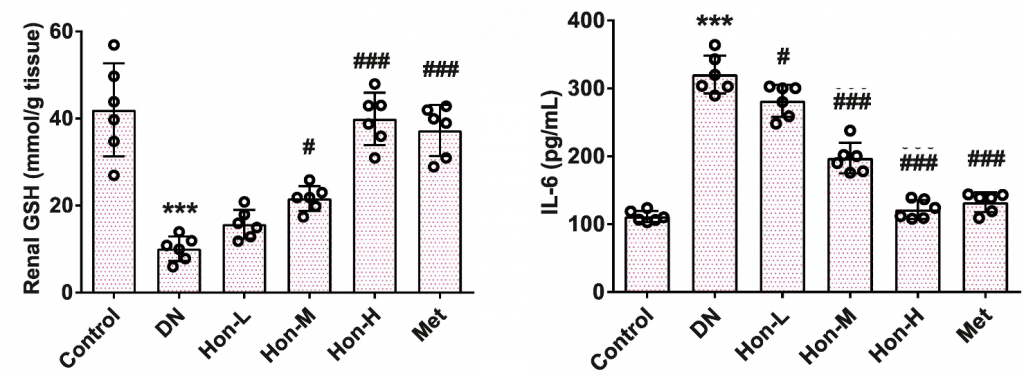Key Points:
- Rats with diabetes have high blood glucose levels, which is reduced equally by both honokiol and metformin treatment.
- Diabetes-induced kidney damage is substantially reduced by honokiol and metformin.
- Inflammation and antioxidant levels are restored by honokiol and metformin.
Approximately 20-50% of diabetics develop a kidney disease called diabetic nephropathy (DN). Most patients diagnosed with DN are above the age of 60. Honokiol has previously been shown to alleviate insulin resistance and protect insulin-secreting pancreas cells, making it an ideal candidate for treating diabetes and the organ damage it causes.
Now, Swift School of Pharmacy researchers in India have found that honokiol could potentially replace an established pharmaceutical used to treat diabetes — metformin. As reported in Life Sciences, Rather and colleagues show that honokiol and metformin equally deter features of DN. Specifically, in a DN rat model, they show that honokiol and metformin help stabilize blood sugar levels, reduce kidney damage, suppress inflammation, and increase natural antioxidants.
Honokiol and Metformin Equally Alleviate Diabetes-Induced Kidney Pathology
To induce diabetes, rats were fed a high-fat diet for eight weeks, then injected with streptozotocin, a toxin that damages insulin-secreting pancreas cells. The rats were then fed honokiol or metformin for eight weeks. Both a high dose (100 mg/kg) of honokiol (Hon-H) and 150 mg/kg of metformin (Met) reduced blood glucose levels and kidney weight. As kidney enlargement is a feature of kidney disease, these findings show that Hon-H and Met equally alleviate features of diabetes and kidney disease.

DN-mediated kidney damage is characterized by several features, including swelling of the blood vessels, enlargement of kidney cell filtering units (Bowman’s capsules), and dilation of the urinary collection tubes. Rather and colleagues graded and scored the damaged kidneys of DN rats in each treatment group. The untreated group had a histopathological score of about 15. This score was reduced in a dose-dependent manner by honokiol treatment. Furthermore, Hon-H and Met both brought the score down below seven, suggesting that both compounds can nearly halve diabetes-induced kidney damage.

Inflammation, and oxidative stress — damage caused to cells by reactive oxygen species (ROS) — are hallmarks of aging. Oxidative stress can be countered by antioxidants, including natural antioxidants like glutathione (GSH), capable of neutralizing ROS. Rather and colleagues showed that DN rat kidneys had high oxidative stress and low antioxidant levels, including GSH. However, both Hon and Met reduced oxidative stress and increased antioxidant levels, including GSH.
DN kidneys also exhibited an upsurge in inflammatory molecules, including IL-6. IL-6 stimulates CRP, an indicator of whole-body inflammation and cell death. CRP also promotes tissue scarring and blood vessel damage. Both Hon-H and Met reduced inflammatory markers like IL-6 and CRP. These findings suggest that honokiol and metformin have similar effects on reducing inflammation and oxidative stress.

“Metformin is a commonly used prescription drug used in type 2 diabetes mellitus. However, some of the adverse effects of metformin are serious e.g., hypoglycemia, anemia, fatigue, lactic acidosis, and anorexia. Honokiol might be a suitable alternative as data from previous studies suggest that it is devoid of serious adverse effects.” – Rather and colleagues
Honokiol For Reversing Aging
Magnolia plants have traditionally been used for neurological, gastrointestinal, kidney, and respiratory ailments. Honokiol, a component of Magnolia plants, has potent antioxidant, anti-inflammatory, and anti-hyperglycemic properties that protect organs like the brain and kidney. Rather and colleagues show that metformin, a purported anti-aging compound, has similar effects to honokiol. Honokiol itself has been shown to protect against lung fibrosis and Parkinson’s disease. While more studies are needed, overall, it would seem that honokiol can target aging hallmarks, thus protecting multiple organs from the clenches of time.